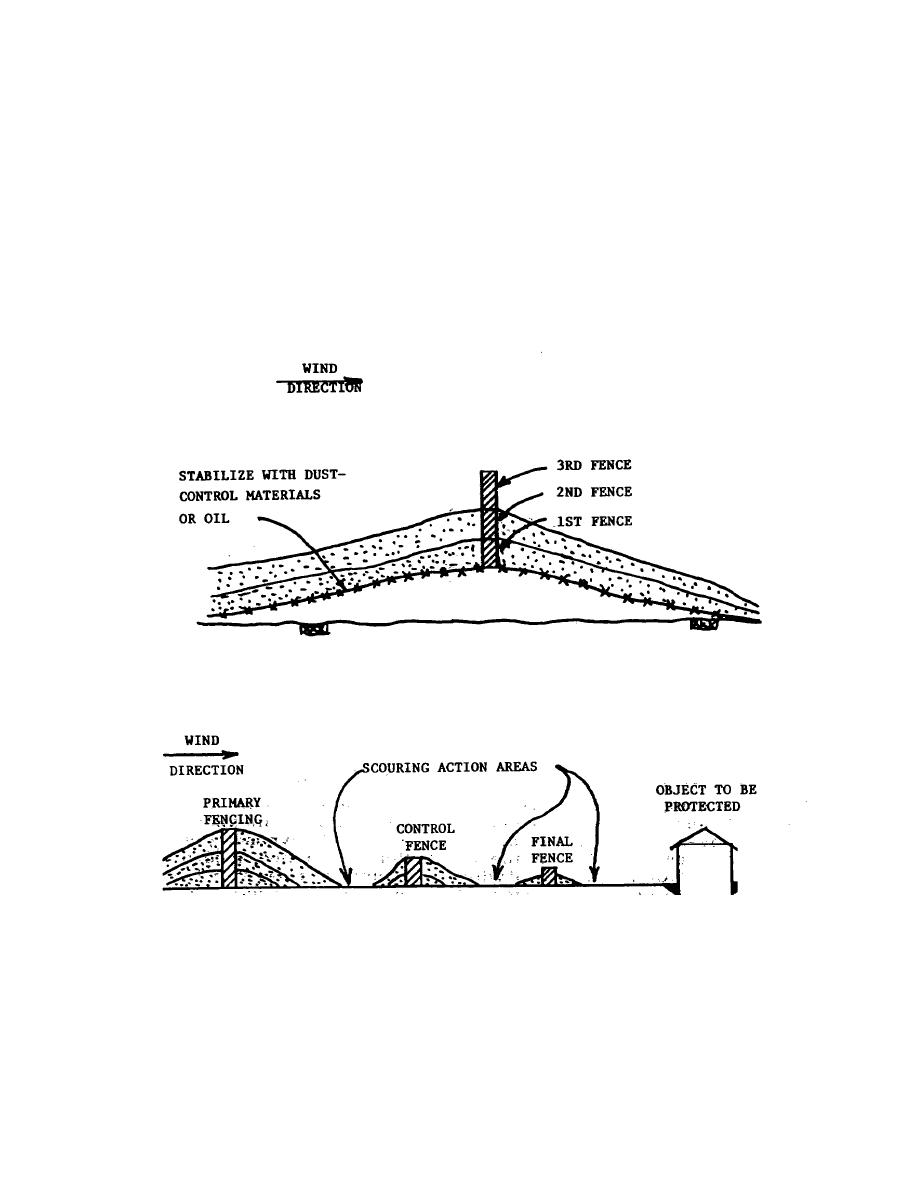
TM 5-830-3/AFM 88-17, Chap. 3
manner and attached to vertical or horizontal supports
Figure B-3 shows a cross section of a stabilized dune
will be adequate. Rolled bundles that can be transported
with porous fencing. As long as the fences are in place,
easily are practical. Prefabricated fencing is desirable
the sand will remain trapped. If the fences are removed,
because it can be erected quickly and economically.
the sand will soon move downwind, forming an
Because the wind tends to underscour and undermine
advancing dune. The proper spacing and number of
the base of any obstacle in its flow path, the fence should
fences required to protect a specific area can only be
be installed about 1 foot above ground level. To
determined by trial and observation.
Figure B-4
maintain the effectiveness of the fencing system, a
illustrates a three-fence method of control. If the supply
second fence should be installed on top of the first fence
of new sand to the dune is eliminated, migration is
on the crest of the sand accumulation. The entire
accelerated and dune volume decreases. As the dune
windward surface of the dune should be stabilized with
migrates, it may move great distances downwind before
dust-control materials, such as bituminous material, prior
it completely dissipates. An upwind fence may be
to erecting the first fence. The old fences should not be
installed to cut off new sand supply if the object to be
removed during or after the addition of new fences.
protected is far downwind of the dune. This distance
Figure B-3. Cross section of dune showing initial and subsequent fences.
Figure B-4. Three fences installed to control dune formation
B-4



 Previous Page
Previous Page
